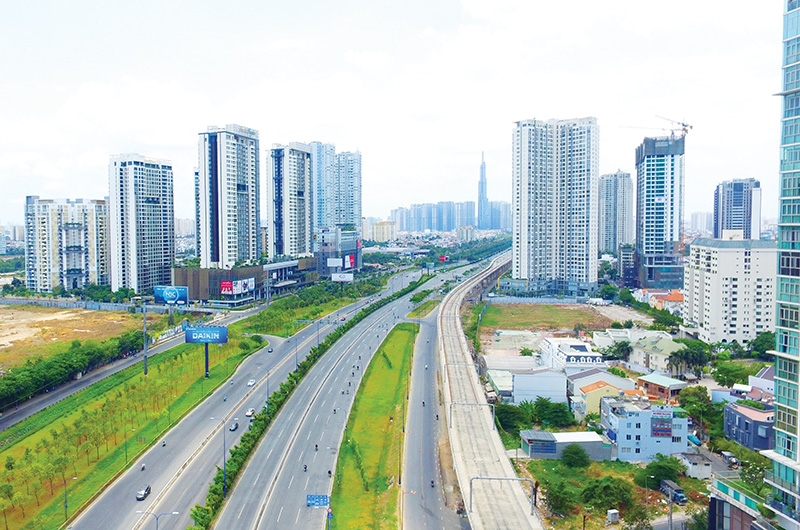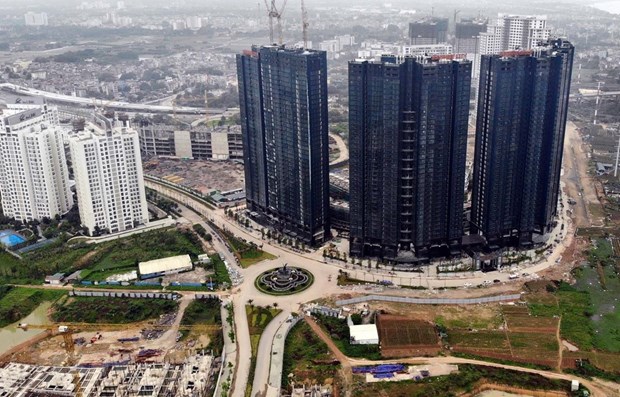 |
Its impact is particularly observable in the service sector, which accounts for 42 per cent of Vietnam’s GDP.
Government ordinances have halted tourism and entry into Vietnam, which had two million arrivals in January.
Hotel occupancy has fallen from over 70 per cent at the start of the year to a record low of 9.5 per cent. Manufacturing (16 per cent of the country’s GDP) relies heavily on the importation of raw materials from China and South Korea. This has also effectively been shut down.
The purchasing managers’ index (PMI) has fallen from 51.8 per cent in January to 49 per cent in March. The recovery of export activity looks challenging since Vietnam’s export market is dependent on Europe, the Middle East, the United States, and more. One positive is the strong correlation between Vietnamese imports and exports.
Therefore, a 20 per cent decrease in one will not adversely affect the balance of trade, though we could see a shrinking of the economy.
Despite these challenging times, the central government has a good opportunity to turn the real estate sector into an engine of growth. They will need to address key structural issues for the market by working with private businesses to improve the regulatory framework and injecting much-needed liquidity into the banking and private lending areas of capital markets.
By resolving long-standing issues curbing real estate supply, the state can streamline an important growth sector and a key driver of foreign direct investment (FDI).
We must look at bottlenecks suppressing the growth of the Vietnamese real estate market, and elaborate on how the resolutions can lead to significant opportunities for investors as we emerge from the health crisis.
The central government’s first priority should be ending the uncertainty around the ongoing review of land transfer pricing. The review of project prices paid by developers should be hastened and given a clear framework for resolution. The review process has caused the development pipeline to all but stop, cascading to the commercial market and creating supply-side constraints.
Supply constrictions during times of increased demand will lead to increases in land, sales, and rental prices. Vietnam has experienced this for months already, and the general underwriting for yielding assets in Vietnam currently has little correlation with market benchmarks and general feasibility.
Providing clear guidelines and a cohesive framework for developers to work within will help resolve supply-side issues without overwhelming or destabilising the market. The creation of a clear mechanism to assess historic and current land values – without resorting to public auctions or speculation – could also be a prudent move by the state.
 |
| Real estate can become a vital driver for foreign direct investment if long-standing issues can be dealt with, Photo: Le Toan |
Increasing confidence
One proposal discussed by investors and developers in the industrial sector is for the state to work on the development of a public-private partnership (PPP) for land owned by the military and state. This would improve investors’ access to suitable land for development and could be used by the landowners to develop more investment-grade facilities.
These locations would increase FDI and help attract investors and occupiers in the manufacturing, industrial, and logistics sectors.
Another possibility presented by domestic and offshore investors is to develop a robust and transparent application and approval process. This would entail appointing three independent evaluators to establish the value of developers’ and investors’ property. The evaluation would be binding to all parties and feed into the conversion process and land use right certificate (LURC) pricing.
This would give developers and investors confidence to move forward on projects in a timely manner, and supply-side issues would be curtailed. The government could strengthen this with wholesale investment through an online registry since the master planning of many cities and provinces is already executed online. Public access to these resources would also drive more transparency.
Processes and frameworks that allow this can be used to address another market bottleneck: the length and conditions of the LURC. Fifty years is an adequate time frame for investors looking to acquire land or assets, and they can work within these tenure constraints. Other regional markets have successfully used similar lengths of time for land leases.
What investors do not like is the uncertainty that arises from the lack of guidance or clear framework for potential issues. In this case, the expiry of a project or asset’s LURC, and the process to renew it, creates uneasiness for investors and developers.
The new draft Law on Land might remove this bottleneck. The 13th National Congress subcommittee has started its first meetings to discuss the next national construction plan, and it is expected that they will ratify the law shortly after congress has been fully formed in early 2021.
However, as long as this remains in flux, the framework will be cumbersome and affect most sectors of real estate, resulting in project delays and increased development cost. By providing clear guidelines, processes, and pricing, the state could open the gates to capital wanting to enter Vietnam.
Infrastructure funding
A third bottleneck is the lack of infrastructure hampering the real estate market. In southern Vietnam, the completion of the inner and outer ring roads, the linking of ports and industrial parks by cargo trains, and the development of rapid transportation nodes would support the efficient and successful use of investment capital.
We have seen successful PPP projects in the northeastern province of Quang Ninh, where Sun Group built an excellent airport, passenger cruise terminal and expressway. The same model could be applied to public transportation nodes by investing in efficient intermodal solutions for transportation, including speeding up the development of railways and improving access to inner cities.
This would remove the infrastructure constrictions hindering the development and investment into many types of real estate. One state-led initiative yielding results is the Five Components Infrastructure plan. The plan focuses on infrastructure investment for coastal and border-gate economic zones as well as the development of industrial parks, hi-tech parks and agricultural zones.
Investment planning and distribution of capital have been identified by private and public sectors as essential to the sustained growth of real estate markets. Providing stakeholders with a clear understanding of their investment’s impact assures that their investment is made in an effective manner. Likewise, developers look for investors that can flex up and down on the yield curve to service their capital needs.
Another bottleneck is access to credit, which the World Bank identified as the most critical element to improved economic growth. Vietnam’s policymakers should address financial restraints if they want the nation to continue “rapid and inclusive growth.”
Access to credit for developers and asset owners is key to broadening Vietnam’s investor base. At present, the key risk for lenders wishing to work with Vietnamese borrowers is quite simple: in the case of default, seizing pledged assets is arduous without mediation by courts.
To reduce risk, lenders use negative controls like board seats, call options for shares of the borrowing company, control of cash accounts, veto rights on decisions at board level or, in some cases, control of the company chop. This creates a barrier for most capital sources wanting to enter Vietnam since they are forced to step out of their risk curve, increasing the cost of the capital they deploy.
Therefore, addressing debt recovery will improve liquidity. Developers and owners could access other sources of capital with cheaper costs and remove the risk to state and local banks.
With the current situation evolving on a daily basis, there’s a chance we could be moving toward a systematic slowdown of global economies, and all of the challenges that would come with that. For an emerging market like Vietnam, real estate can be a bonafide driver of financial growth and aid recovery in the event of an economic downturn.
This growth depends on FDI in industrial, retail, and office and infrastructure sectors. Enabling asset owners to use their buildings as security for lines of private credit, stimulating the domestic market for companies and manufacturers, and expanding operations will put money back into people’s pockets in the form of wages.
Vietnam can swiftly address these bottlenecks, which would heighten investor confidence and help maintain rapid growth. The government can resolve a few of these issues to cement its global reputation as a state capable of adapting to an ever-changing world. VIR
Ben Gray and Paul Tonkes

VN real estate investors struggle to find suitable investment channels
Investors are struggling to find real estate products as the supply is decreasing and other investment channels are no longer attractive.

Scenarios charted to recover frozen HCM City real estate market
Experts and businesses in Ho Chi Minh City’s real estate sector have mapped out recovery scenarios after the COVID-19 pandemic passes, with the local property market having experienced a marked slowdown.
 The ongoing coronavirus pandemic has upended economies worldwide, and Vietnam must take urgent measures to handle this period of instability.
The ongoing coronavirus pandemic has upended economies worldwide, and Vietnam must take urgent measures to handle this period of instability.